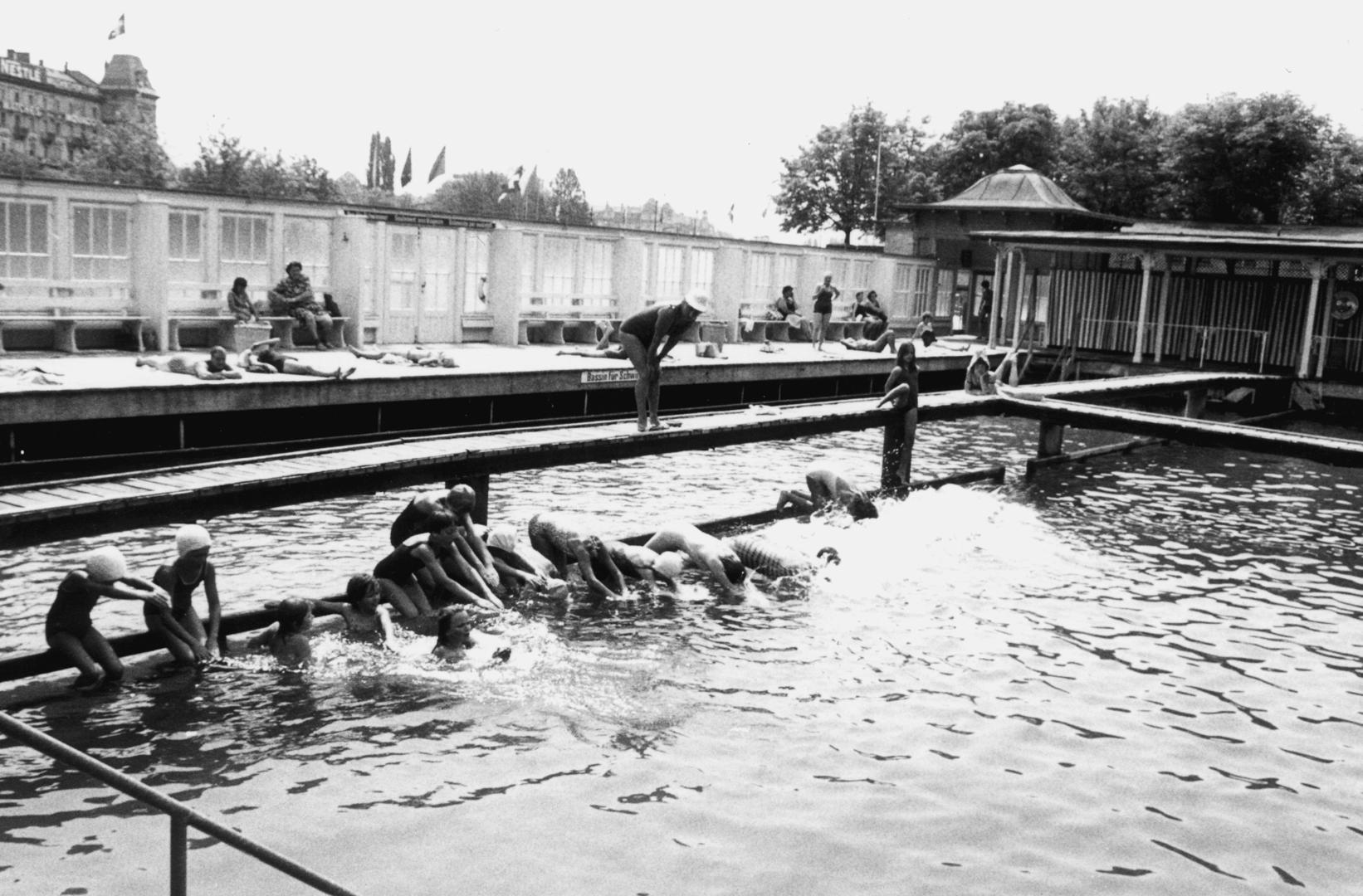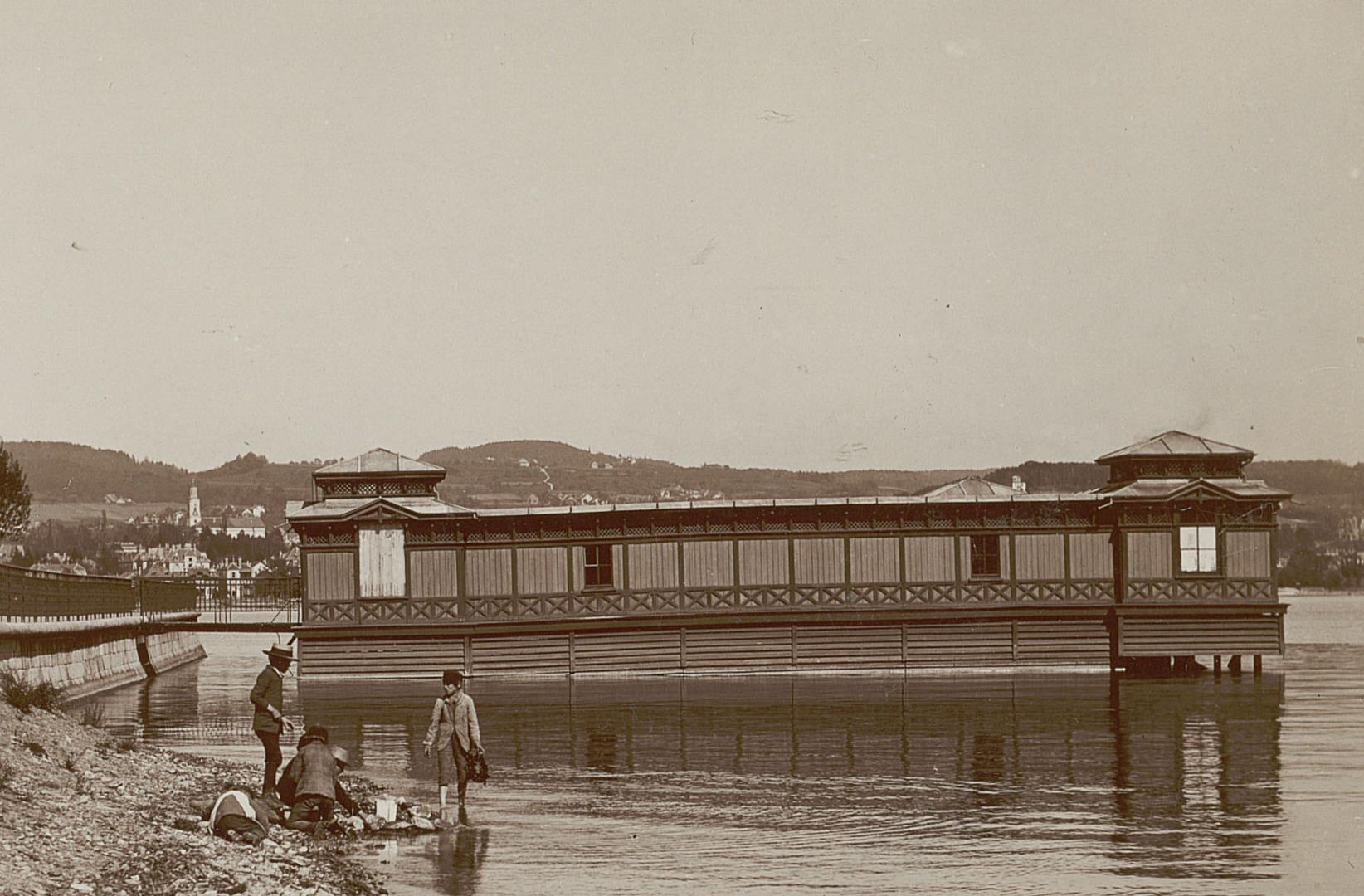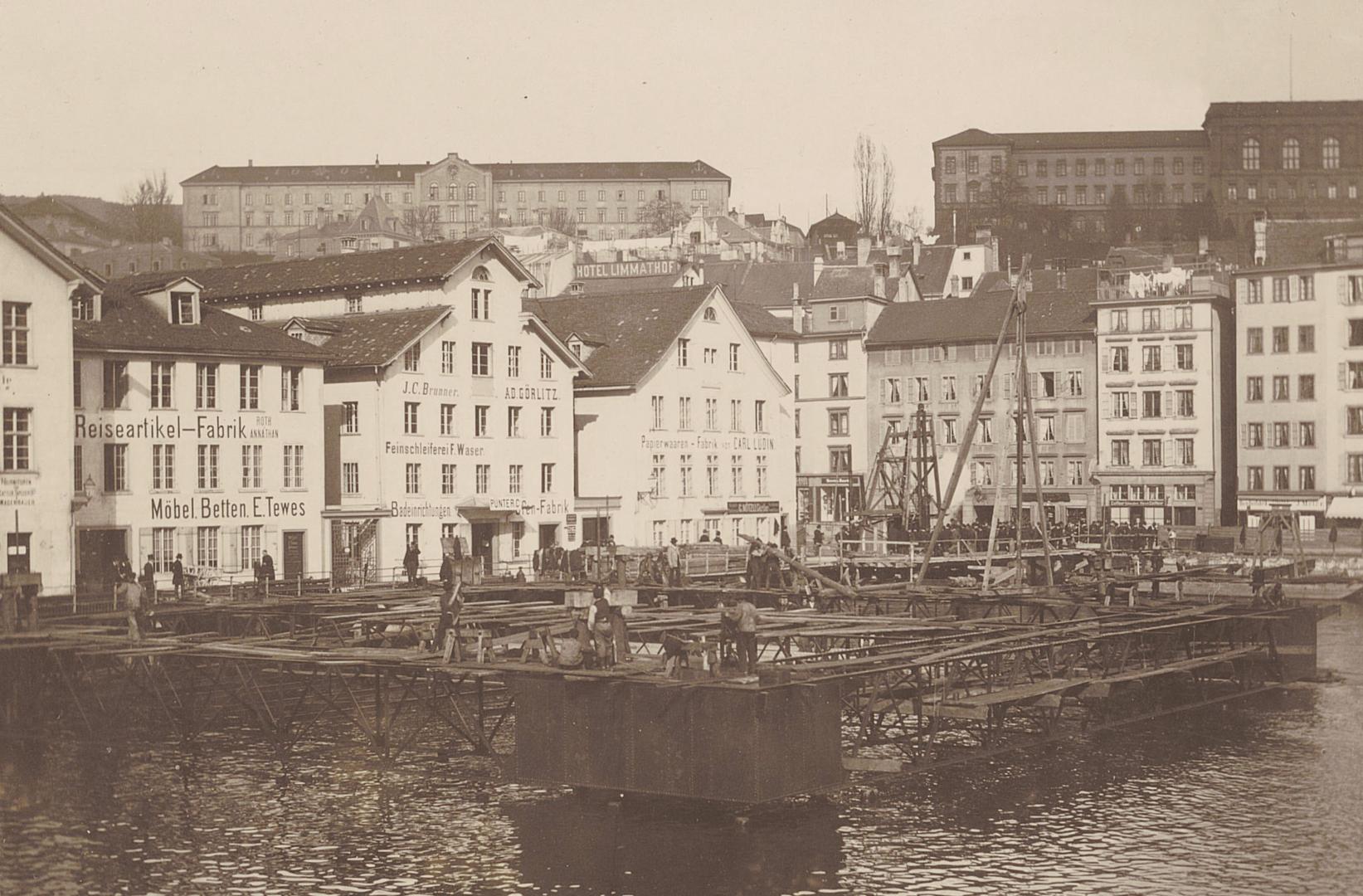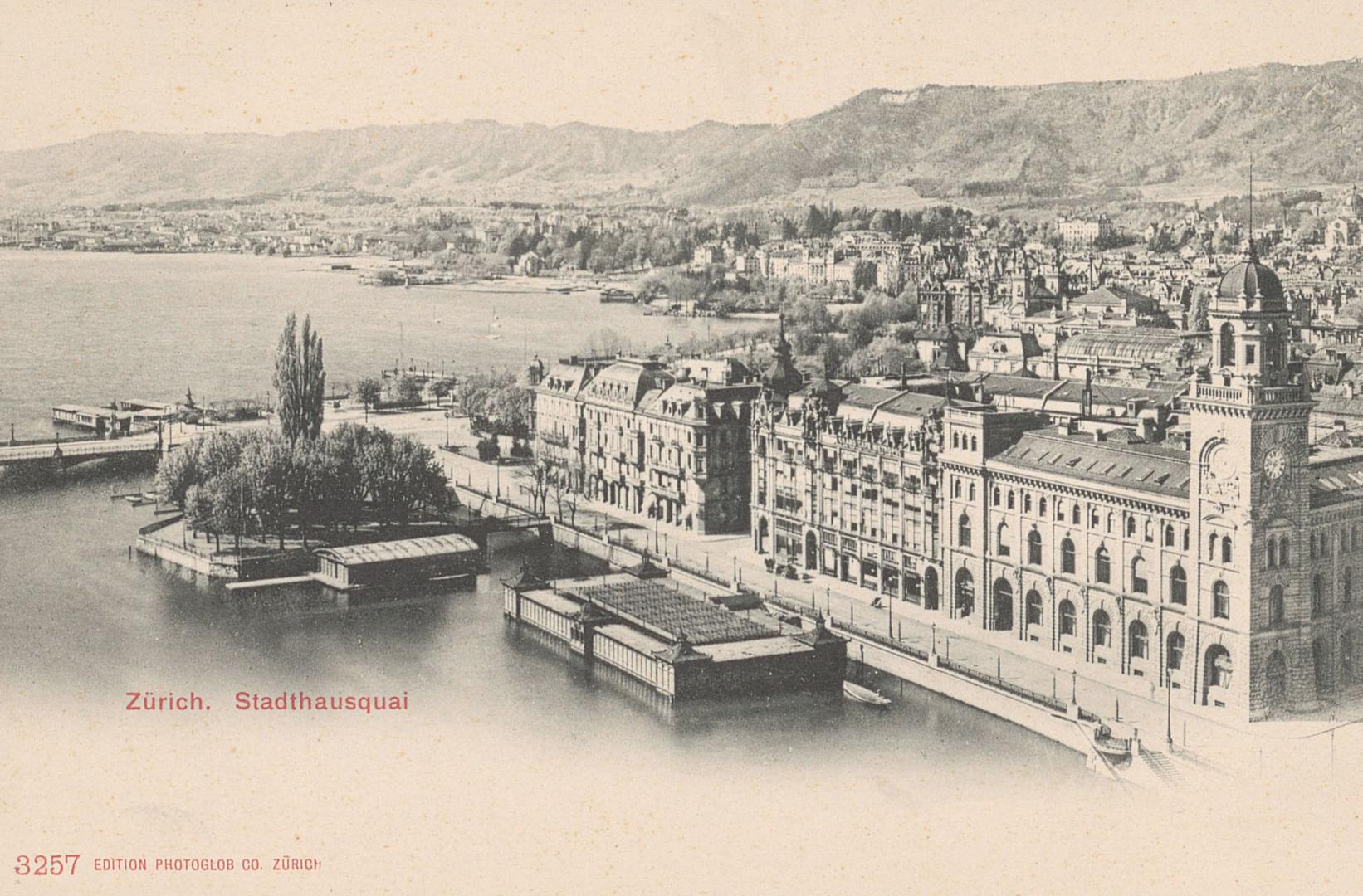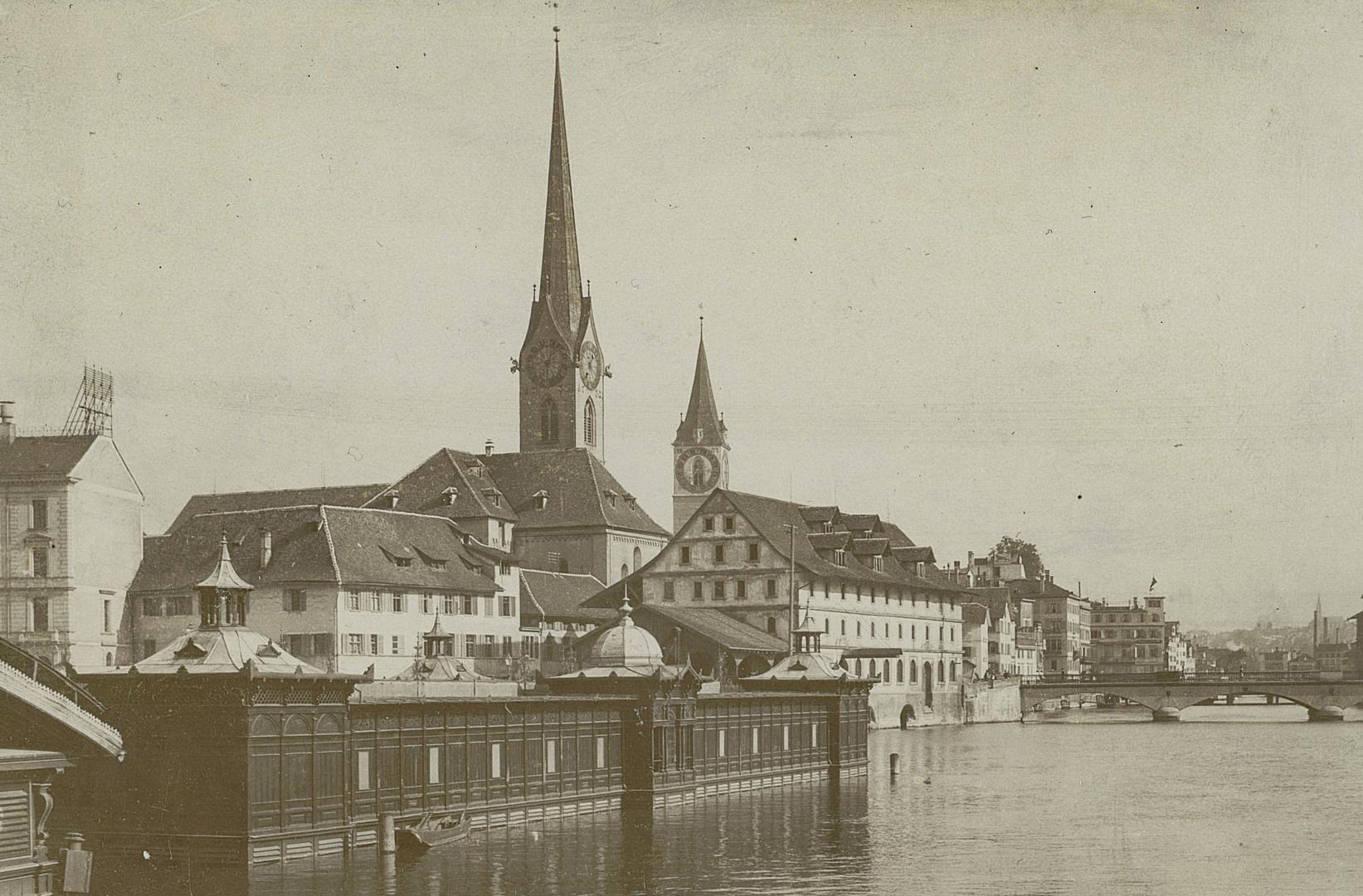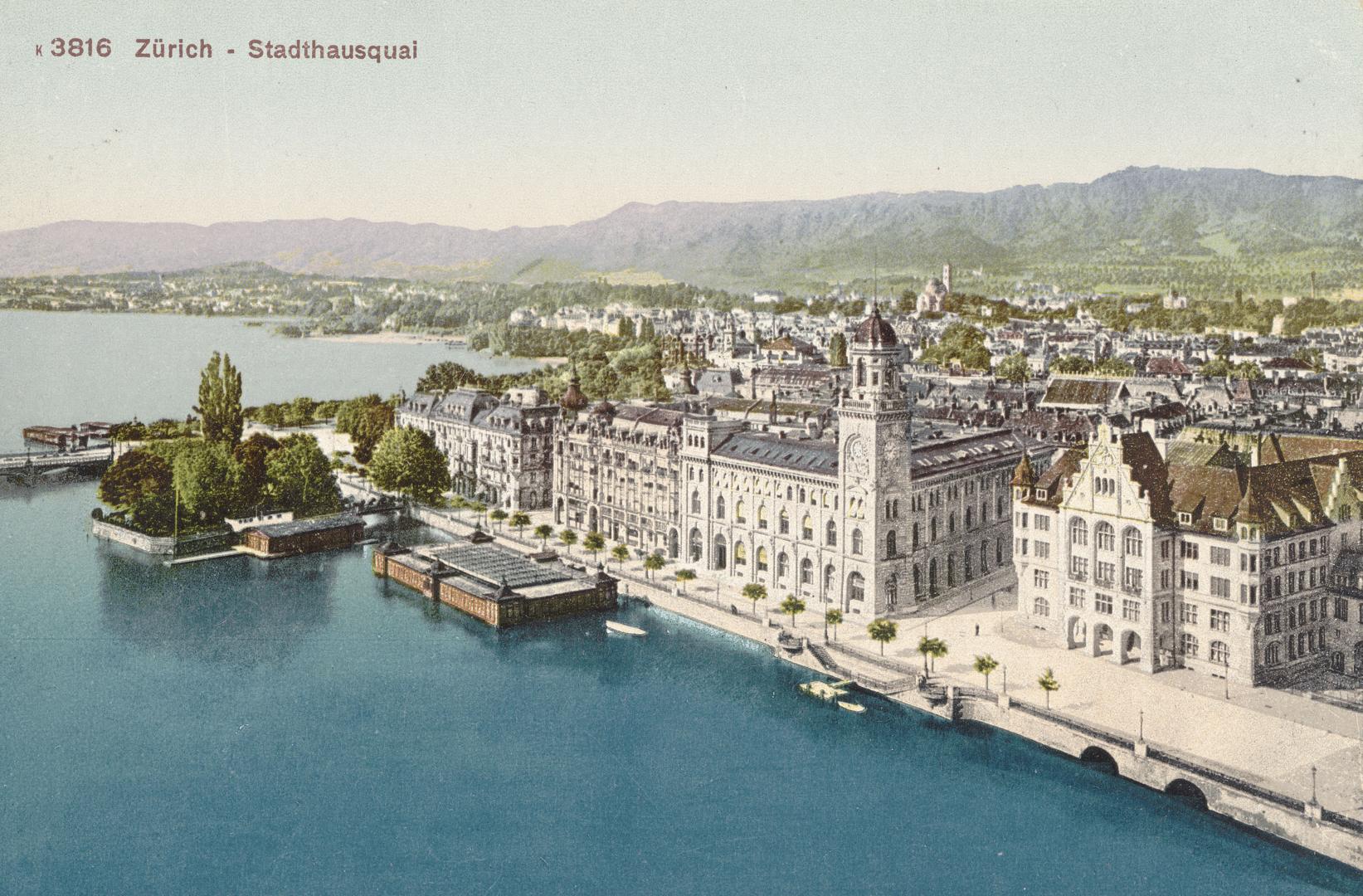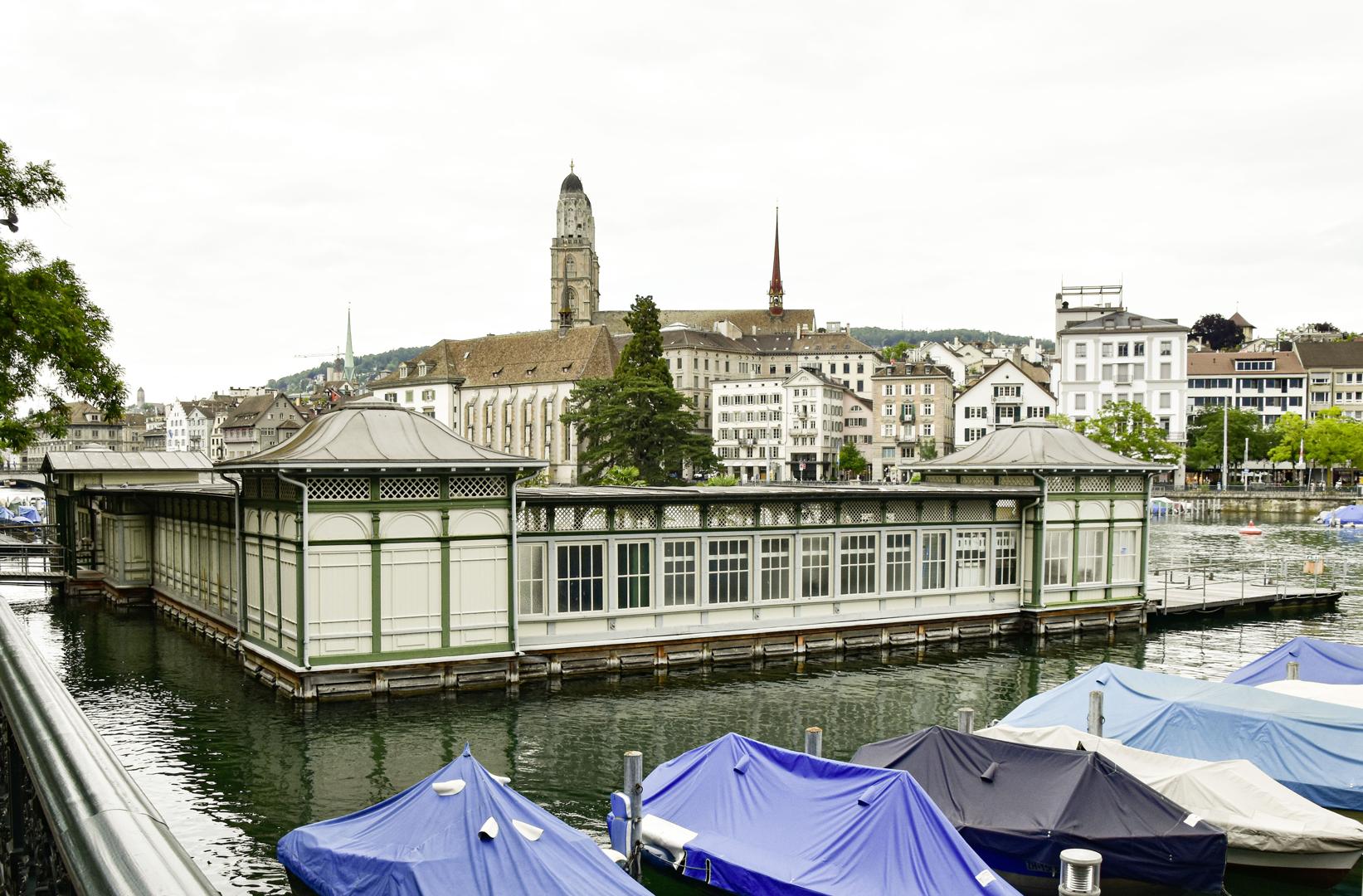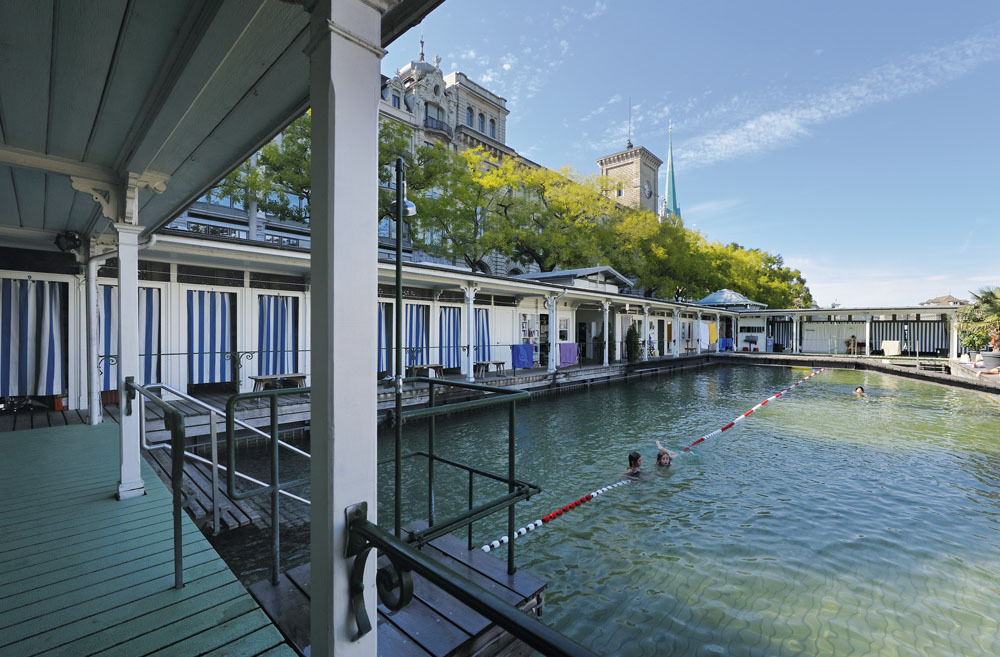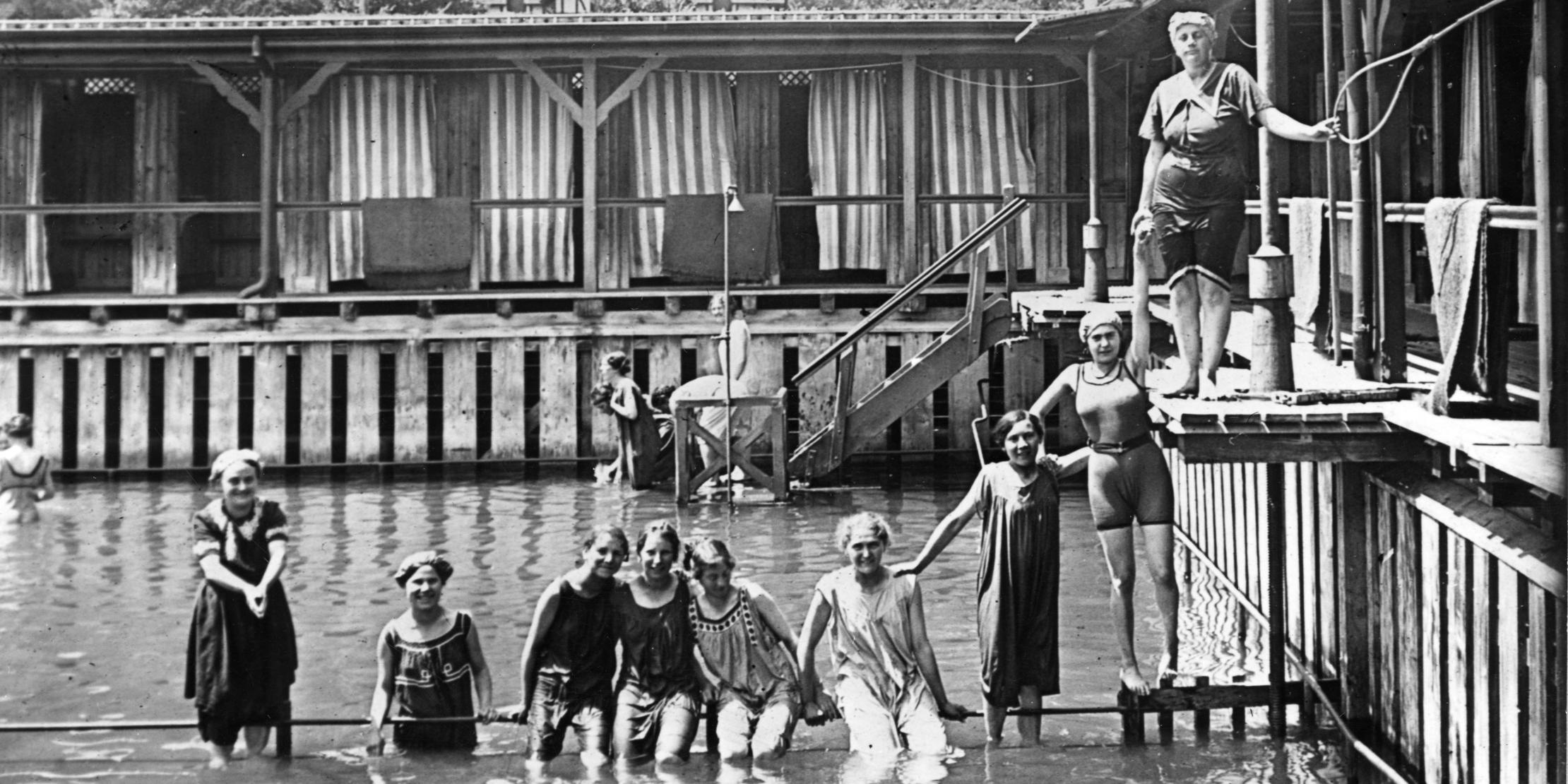
A bathing house for women only
Come summer, people head for the lidos in droves. As we mark 50 years since women in Switzerland gained the vote, we take a look at Zurich’s women-only bathing facilities.
A women’s lido in the 21st century
A bathing facility for women only? Nowadays? In Zurich? Absolutely. The women’s lido is as much a part of the city as the lake and the Uetliberg. Some tourists may be surprised to see the word “Frauenbad” (“women’s lido”) over the entrance to the building on Stadthausquai. If a man tries to enter, however, it is soon made clear to him that women means women only, with no exceptions. Every now and then, the attendants do indeed have to step in and turn away a male tourist who has strayed into the female domain.
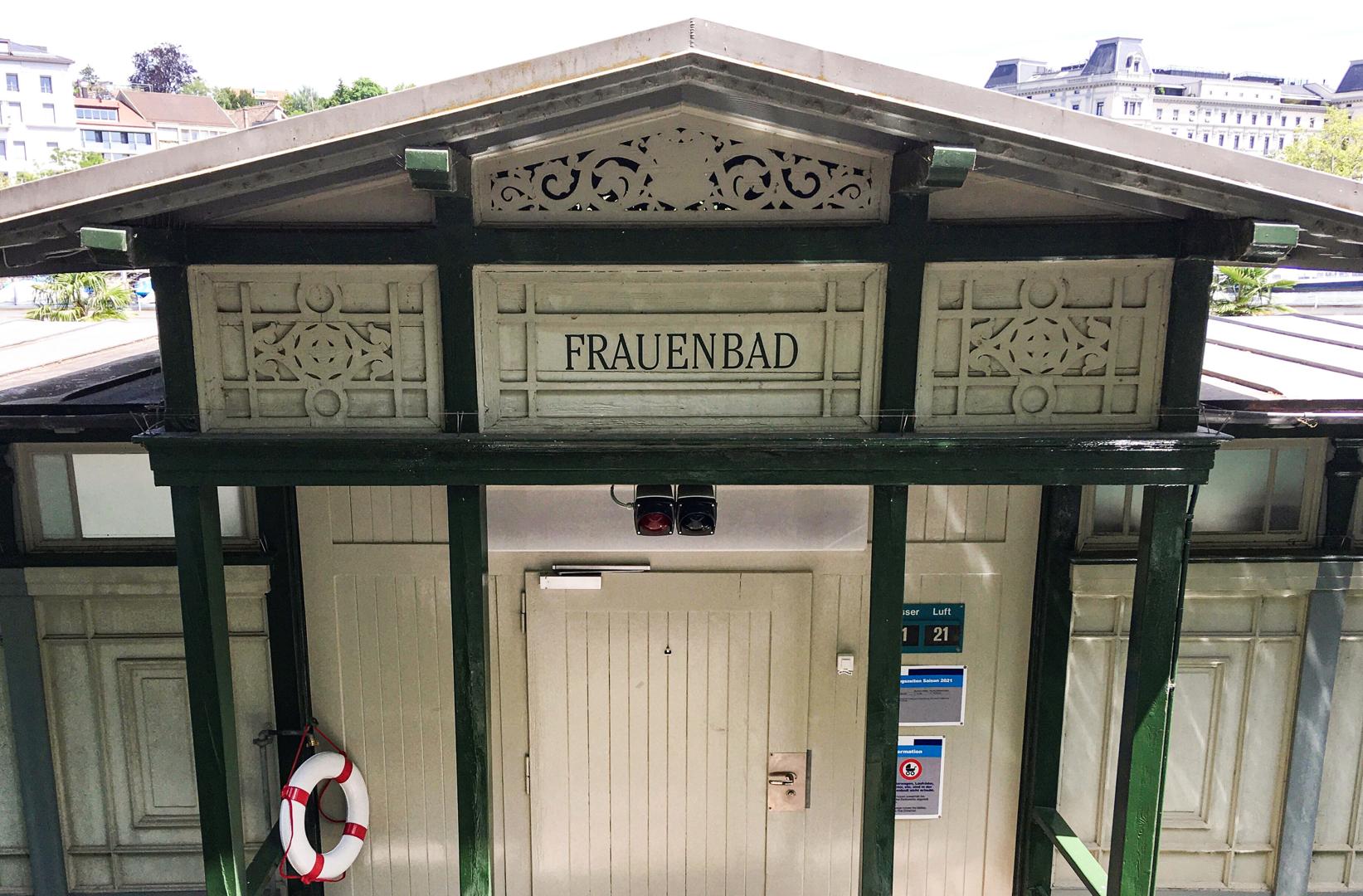
With its relaxed atmosphere, lack of inhibitions and absence of wolf-whistles, Zurich’s women-only lido is close to the hearts of its regular clientèle. In his booklet entitled “Baden gehen in Zürich”, Martin Walker offers a matter-of-fact assessment of Zurich’s male and female population and their relationship to the women’s and men’s lidos: “Men and women have long bathed separately in Zurich, and to this day, occasionally appreciate being among their own sex for a change.”
“A bathing house for women folk”
In days gone by, Zurich’s female inhabitants valued their single-sex lido far more than they do today. In the early 19th century, many houses in Zurich do not have a bathroom, and bathing in public is regarded as uncouth and indecent. Despite this, some women still defiantly bathe in the fountains at night. Calls for appropriate bathing facilities become louder.
In 1837, in response to a petition that has gathered numerous signatures, the city council orders the construction of a “bathing house for women folk”. It stands at the artificial island known as the Bauschänzli in the River Limmat and is a small building on stilts, the interior being invisible from outside. Stephan Kaufmann includes plan drawings of the construction in his thesis on “Lake and river bathhouses in Zurich”. The bathhouse proves so popular that it is extended just a year after it is completed.
A picturesque construction
Later, there are various forms of women-only bathhouses in Zurich, culminating in the construction of facilities at Stadthausquai and Belvoirpark in 1888, followed two years later by another at Mühlesteg. The latter is intended for poorer members of the population, and admission is free.
In its basic outline at least, the women’s bathing facility at Stadthausquai resembles its modern incarnation. The alterations made to the timber-box construction over time reflect changes in society: the lido evolves from a public bath, with individual cubicles for its female clients, into the leisure facility we know today, with large areas for sunbathing and an adjoining open raft section that can be clearly seen from Limmatquai.
“The main entrance and the corner pavilions with their gently curving pagoda roofs add a painterly note”, the city’s historic monuments preservation department comments in its “Special Inventory of Bathing Houses”. For the Swiss Heritage Society, the women’s lido at Stadthausquai is one of the “Most Beautiful Baths in Switzerland”.
Matters of equality
Photographs of the interior show a wonderful bathing facility, while visitors praise the pleasant atmosphere – do we detect a note of envy among men who are denied admission? A few years back, two members of Zurich’s City Parliament called on the City Council to examine whether it would make sense to open up the women’s lido to men as well.
They were unsuccessful, and the women’s lido on Stadthausquai has remained women-only. The men’s lido at Schanzengraben is still going strong too, as are areas and times reserved for men and women respectively in other bathing facilities around the city.
The issues of transgenderism and intersexuality are trickier to deal with. Does someone simply need to identify as a woman in order to gain admission? “The way we deal with this issue at present is that people need to be identified as women on the basis of an official ID or comparable document”, says Philipp Buchelt, area head south for city of Zurich bathing facilities. Fortunately, in the evenings, when the women’s lido is transformed into the Barfussbar, people of every gender can enjoy the picturesque wooden structure.
Incidentally, in the “Züribadibuch”, author Tina Schmid writes that early on Sunday mornings, a column of swans proceeds down the River Limmat and past the women’s lido. Nobody knows where they are going. Here’s hoping they are still making their mysterious journey.
Stefanie Ehrler, Turicensia Department
July 2021
Header image: In the Enge women’s bathing facility near Belvoirpark (BAZ)
